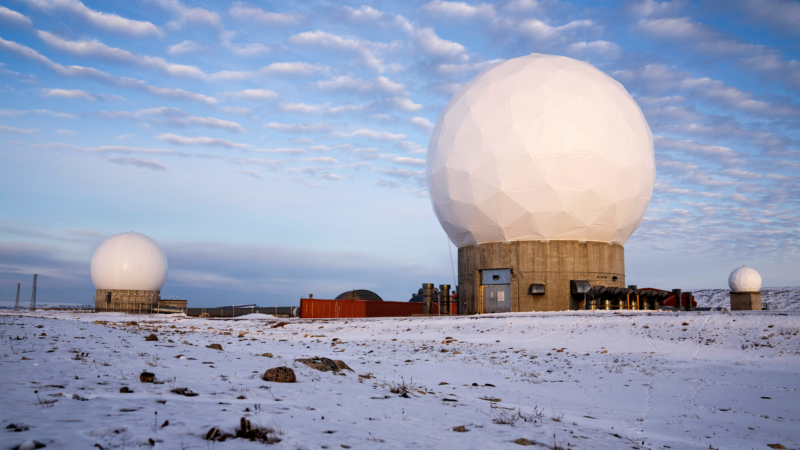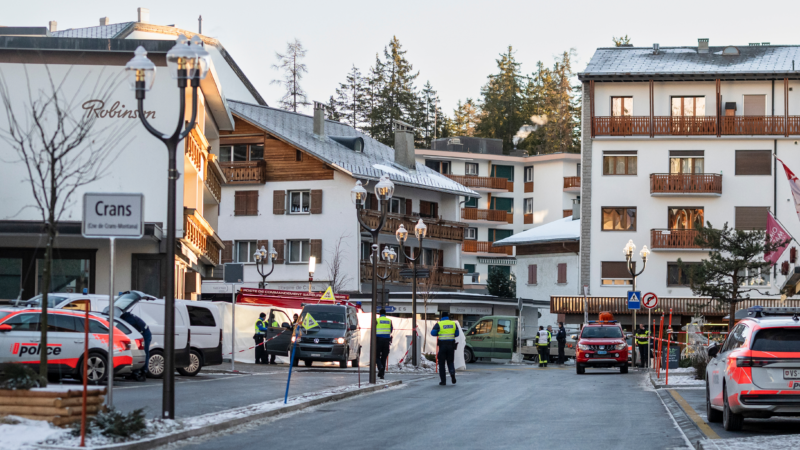What to know about Pituffik, the only U.S. military base in Greenland
Vice President JD Vance this week will embark on a trip to Greenland, the massive but sparsely populated Arctic island with global strategic value.
President Trump has repeatedly signaled in his second term that he is interested in buying Greenland or otherwise acquiring the ice-covered territory partially controlled by Denmark.
In fact, the U.S. already has a presence there: Pituffik Space Base, an American military installation that Vance will visit on his trip. The remote base situated between the U.S. and Russia is seen as a key outpost in U.S. military defenses.
“Right now … this base is the most important geographic location the United States has” in case of an attack from the center sector of the Arctic, says Troy Bouffard, a professor of Arctic security at the University of Alaska Fairbanks.
Here’s what you need to know about the base.
The history of the only U.S. base in Greenland
Pituffik Space Base is located on the northwestern coast of Greenland just across the Baffin Bay from Nunavut, Canada. It is pronounced bee-doo-FEEK, according to the U.S. military.
Loading…
In 1946, the U.S. and Denmark jointly established a radio and weather station near where the base sits today. Greenland is a semiautonomous territory of Denmark.
The U.S. and Denmark began secretly constructing the military installation there in 1951 so the U.S. could stage long-range bombers closer to China and what was then the Soviet Union. Pituffik continues to operate today through mutual defense agreements between the U.S. and Denmark.
Previously known as Thule Air Base, the installation was renamed in 2023 to “recognize Greenlandic cultural heritage and better reflect its role in the U.S. Space Force,” the military said in a press release.
Location, location, location
Pituffik is critical to U.S. military capabilities in large part because it rests directly between the northern U.S. and northern Russia, Bouffard and other national security experts say.
The U.S. military conducts missile warning, missile defense and space surveillance missions from the base.
According to Bouffard, the U.S. maintains significant defense capabilities in Alaska to guard against a potential attack from the west. Early warnings of a strike from the east could come from U.S. allies such as the United Kingdom, Iceland and Greenland.

“The center sector there with that base is absolutely paramount,” Bouffard says. “That is the area that has some gaps in capabilities that could be exploited.”
Russia has long maintained a military presence in the Arctic, and U.S. defense officials said last year that China is increasingly interested in operating there. Trump has said it is an “absolute necessity” for the U.S. to take ownership of Greenland for national security reasons.
But Pituffik’s location also presents the military with some challenges, according to Bouffard. It is the Defense Department’s northernmost installation, where average winter temperatures sink to between 13-20 degrees below zero.
If the base upgraded its systems to better counter new threats from Russia, such as hypersonic cruise missiles, it may have to defend that technology with short- and medium-range army air defenses, Bouffard says.
“To date, those U.S. Army-type of units have never operated in the Arctic like this and neither have the systems,” he says.
Guides to help you tackle your New Year’s resolutions
From building your strength to tackling credit card debt, NPR's Life Kit has a newsletter journey to help you tackle your New Year's resolution.
Guides to help you tackle your New Year’s resolutions
From building your strength to tackling credit card debt, NPR's Life Kit has a newsletter journey to help you tackle your New Year's resolution.
Dozens presumed dead in fire at Swiss Alps bar during New Year’s celebration
Dozens of people are presumed dead and about 100 injured, most of them seriously, following a fire at a Swiss Alps bar during a New Year's celebration, police said Thursday.
Warren Buffett officially retires as Berkshire Hathway’s CEO
The legendary 95-year-old investor spent decades building his company into one of the world's largest and most powerful. Now Greg Abel is taking it over.
Crypto soared in 2025 — and then crashed. Now what?
For most of 2025, cryptocurrencies such as bitcoin surged as President Trump vowed to make the U.S. a crypto leader. But now, a severe sell-off has shaken the sector.
Zohran Mamdani sworn in as New York City mayor, capping historic rise
Mayor Zohran Mamdani took the oath of office in New York City after midnight Thursday. The city's first Muslim mayor, a member of the Democratic Socialists of America, has promised to focus on affordability and fairness.






